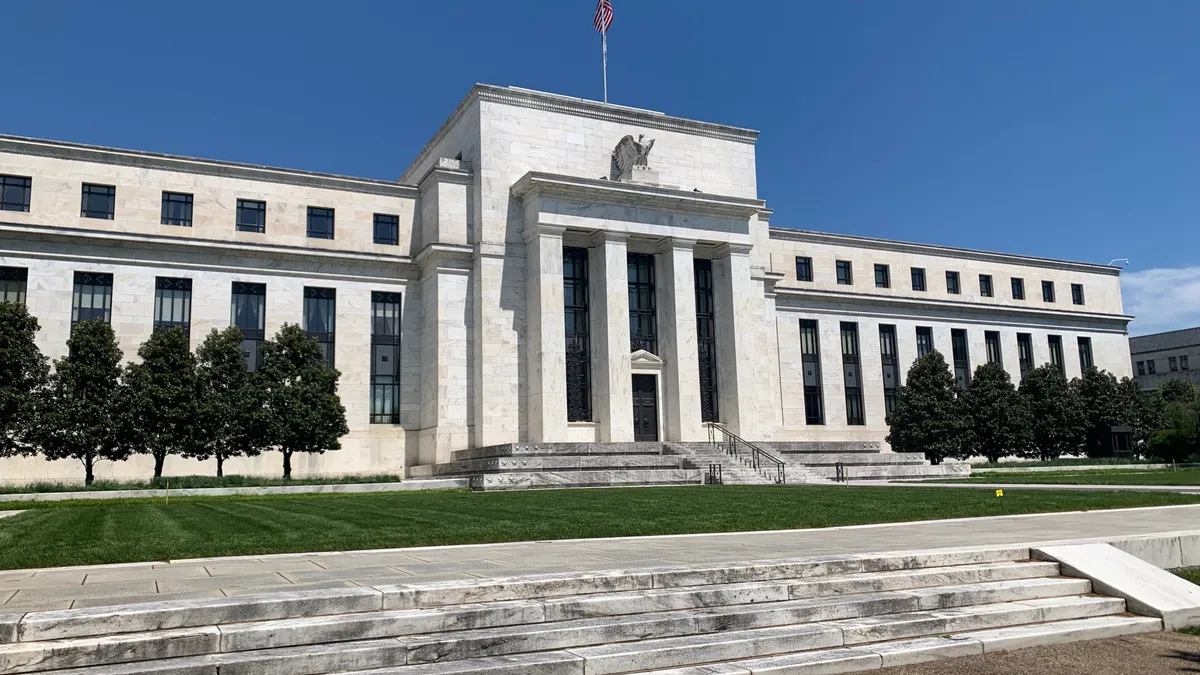Dive Brief:
- The Federal Reserve Bank of New York worked with the Monetary Authority of Singapore to test the use of a central bank digital currency for improving the efficiency and transparency of cross-border payments, according to a report they published last week regarding the effort.
- Their aim was to explore the interoperability of such CBDC systems as well as the limitations of current cross-border currency options, the report said. As part of the testing, they maintained the independence of the two countries’ central banks and used digital ledger technology.
- “Although solutions that drive efficiencies, such as low risk and speed, exist today, illiquid currency pairs continue to face limitations, such as high costs, slow settlement times, lack of access to market solutions, and limited transparency,” the study said.
Dive Insight:
The 51-page study from the New York Federal Reserve’s New York Innovation Hub and the Singapore central bank noted the increase in cross-border payments in recent years with the rise of international commerce, multi-national companies and foreign investments. (The New York Federal Reserve’s New York Innovation Hub is an effort in partnership with the Bank of International Settlements Innovation Hub.)
The New York Fed undertook the testing as part of its Project Cedar effort while the Singapore authority’s testing on the digital ledger front is part of its Ubin+ initiative, according to a Friday press release on their work together.
The technology tested by the New York Fed and Singapore authority was able to deliver payments in less than 30 seconds, including with transactions that included “several cross-ledger currency exchanges,” the report said. A form of smart contracts was used in the test and the central banks determined that they could achieve interoperability with the system.
“Cross-border payments are a major railway for facilitating the functioning of the global economy” the New York Fed's markets group head, Michelle Neal, said in the release. “Our research collaboration with the MAS reveals key opportunities for central bank innovation to play an important role in easing wholesale payment flows globally and improving settlement outcomes.”
“The Cedar x Ubin+ collaboration investigated potential solutions to bridge heterogeneous networks implemented under separate governance and operating models, while maintaining the independence of the respective central bank infrastructures,” the report said.
The report explained that most cross-border payments today occur through the correspondent banking system and payment service providers connecting domestic systems, with aid from the Swift messaging system. As of April of last year, there was daily turnover of $7.5 trillion in the foreign exchange market through which such currencies are converted for use in different countries, according to the report.
Central bank digital currencies are being tested by 90% of the world’s national central banks, according to BIS, as a means to potentially improve cross-border transactions using digital ledgers, also known as blockchain technology. That is the same payment technology that also undergirds cryptocurrencies.
The interest of the New York Fed and Singapore central bank were driven by a shared desire to reduce the cost of current cross-border payments as part of increasing the efficiency. Currently, systems tend to be slow and expensive, with limited access for some countries.
Successful improvements would include enabling cross-border payments for more currencies, especially payments that are time-sensitive; allowing near real-time settlement across currencies; and creating interoperability between the payment infrastructures of countries, the report said.
The report made clear that it was not intended to advocate for any particular policy outcomes with respect to their nations’ deliberations on CBDCs. The Federal Reserve Board has been contemplating the possibility of creating a CBDC, but it has noted that any such development would be an initiative that includes participation by Congress and the Biden administration. The concept has faced resistance in the U.S. from some corners of the banking industry.











